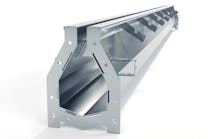Download the full PDF of the supplement here.
It is very unlikely that there is a more ubiquitous public building than the fire station.
If we assume that career fire departments are generally situated in locations that allow firefighters to meet a five-minute response time 90 percent of the time, then the fire station cannot help but be one of the most predominate public owned facilities across the landscape.1 However, the volunteer fire service lives by a different standard.2 Volunteer fire departments must frequently protect rural and remote locations, resulting in fire stations being placed on the outside border of the community response zones. And sometimes, volunteer fire departments protect sparsely populated areas with a minimum of a tax base to support the operation.
That does not mean that all fire stations are equal in capacity or functionality. To the contrary, fire stations range from the simplest of structures to the most complex of buildings.
Many volunteer fire departments have a public facility need that is significantly more expensive than they have resources to meet. If your organization is adequately funded and can afford to build to the highest of standards, you are to be congratulated. But if your organization is desperate for physical facilities, then the remainder of this article might be useful to your decision process.
Minimum standards
In the fashion world, there is a term called the “little black dress.” That term implies fundamental minimums of sophistication. We have a need in the fire service to adopt a basic fire station configuration for the same reason—to set a minimum standard for what is called a “fire station.”
Over the past several years, I have visited hundreds of volunteer fire departments. The quality of volunteer fire stations ranges from undesirable scenarios in which fire apparatus are sitting out in the weather to multi-million dollar facilities that are a joy to behold.
With this in mind, in this article, we will focus on a simple question: What is the minimum you should be planning for if your funds are limited? Further, we’ll focus on a key factor in station design: the elimination of fire apparatus sitting out in the weather—a scenario that renders the vehicle almost useless in inclement weather.
An excellent resource for any community that is planning a new fire station is to look at the Whole Building Design Guide (WBDG) website.3 It is an excellent website to begin the planning process for any fire station, and one that is particularly useful in guiding decisions as to what you can afford or not afford to put into a structure. The section on design considerations is particularly appropriate.
When your department is faced with a scenario in which a piece of equipment is going to be stored outside, the department must institute a decision-making process that reduces the consequences of deterioration of the rolling stock. Not all building systems offer low-cost and time-effective solutions that might be considered at this point in time. It is important to consider not just the construction of the fire station but also the issue of long-term budgets. Many fire departments have turned to metal buildings as a temporary solution that can be recycled or reutilized.
Putting up a metal building can be accomplished in as little as six months, which means it can be completed during the best weather conditions. According to manufacturers’ information, they can be as low as $71.00 a square foot.4
Additionally, the decision to build a substation to house an apparatus cannot be taken lightly. The substation concept is linked with the station location criterion and the Standards of Cover. Yet there are thousands of substations that do not have a basic minimum fire station design. If we look at the ICS concept of typing engines and other resources, perhaps it is time to type fire stations as well.
Table 1 shows functional aspects of fire stations that apply to volunteer substations. Designing a temporary building should take into consideration the following components:
In sum
If you have the money to build the most magnificent fire station possible, then do so. However, if you have apparatus sitting outside in substation locations, you should do everything in your power to shelter them. While there is no standard design for volunteer or combination fire departments, putting up a temporary shelter is a good management practice. It is the basic idea of the “little black dress.” It serves a purpose without breaking the bank. While the temporary station cannot possess all the “bells and whistles” as a permanent station, it services a basic need—to protect the rolling stock.
References
1. NFPA 1710: Standard for the Organization and Deployment of Fire Suppression Operations, Emergency Medical Operations and Special Operations to the Public by Career Fire Departments
2. NFPA 1720: Standard for the Organization and Deployment of Fire Suppression Operations, Emergency Medical Operations and Special Operations to the Public by Volunteer Fire Departments
3. Whole Building Design Guide: wbdg.org/building-types/community-services/fire-station
4. Praeger, C. “Metal Buildings for Firehouses.” Fire Engineering Magazine, 162:1

Ronny J. Coleman
Ronny J. Coleman is a 50-plus year veteran of the fire service. He is the former Fire Marshal of the State of California from 1992 to 1999, and the past president of the Fire & Emergency Television Network. He served as the Fire Chief in Fullerton, CA, and San Clemente, CA. He is a certified Fire Chief and a Master Instructor in the California Fire Service Training and Education System. For his retirement in 1999, the California Fire Chiefs Association created an annual "Fire Chief of the Year Award" named in his honor. A Companion Fellow of the Institution of Fire Engineers, he has an associate's degree in fire science, a bachelor's degree in political science and a master's degree in vocational education.






